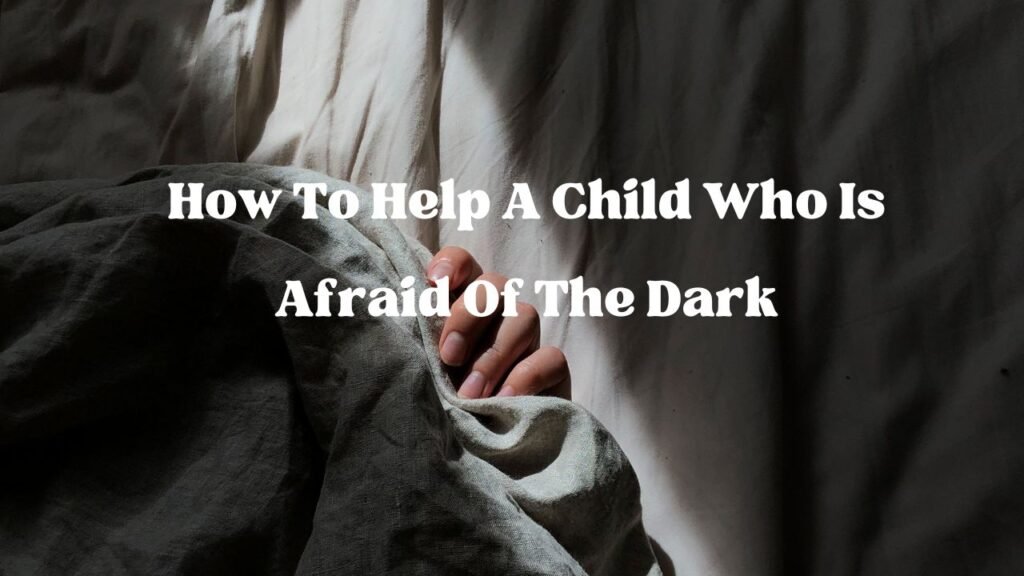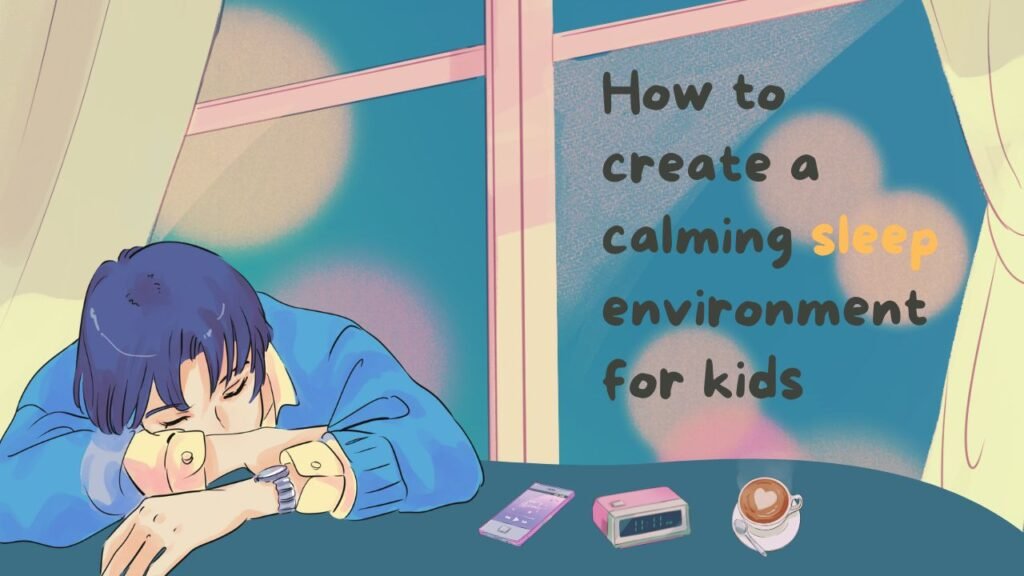Table of Contents
Introduction to How To Help A Child Who Is Afraid Of The Dark
How To Help A Child Who Is Afraid Of The Dark: From scary new movies and spooky stories to Halloween or just being alone at night, fear of the dark is one of the most common childhood fears, experienced by nearly all kids at some point.
An imagination that is still developing can make going to bed a scary prospect for small children and may result in bedtime fears and difficulty in sleeping.
Every night is a new set of challenges and as a parent who wants the best for them at the end of the day, you may not have an idea already what is the best way to help him/her.
In this blog we will explore how you can help the children in your life navigate fear of dark with empathy and patience, and strategies that actually work.
Through establishing a soothing bedtime routine, or using innovative solutions that work for each scenario, you will discover step by step ideas to support your children sleep by themselves and develop their assurance.
Bedtime with a proper parenting approach will become easy and help your child to feel safe in the dark.
Getting to Grips with Fear of the Dark in Kids
Most kids will go through a stage of being afraid of the dark (often between ages 2-6) as part of normal childhood development.
Kids of this age have a very vivid imagination, which one can test right now by letting them imagine what could be in the dark, even if it only wall shadows.
The atmosphere is of facing childhood fears of the dark and for these reasons now this is common →
The Reason Behind long Dark Phobia in Children
Active Imagination: As children grow, imagination develops; they begin to envision what could be, and this may result in some fear of imaginary beings or things we cannot see.
Unseen Claustrophobia: Darkness reduces the understanding of surroundings, disallowing children the sense of control or clarity of what exists.
Recent Changes Or Movements — Big adjustments like transferring houses, entering school or even watching specific films can spark concern of the darkish in kids.
The fear of the dark can interfere with sleep and cause children to get anxious at bedtime, and then a again cycle when children are more afraid of going to bed night after night.
They realize this fear is a natural stage, and are able to approach it with understanding and grace.
Identifying Signs of Fear of the Dark
It is a fact that not all children vocalize their fears so here are the signs to look out for which suggest there may be a dread of darkness:
Nighttime Anxiety
Anxiety at bedtime in kids afraid of the dark. They might request to sleep with lights on, not go to bed alone or call on parents constantly at night.
Bedtime Resistance
It may even take longer to get to bed if a child has difficulty getting over her fear of the dark, which could result in asking for additional stories, water, or bathroom breaks.
These strategies are often their means of stalling a situation that puts them in a place of discomfort.
More nightmares and trouble falling asleep
Dreams – Nightmares It may even indicate fears stemming from the night.
Having the odd bad dream is totally normal, but if you find that your child is having nightmares every night or having a lot of trouble getting to sleep then it may be a sign they are anxious about bedtime because of fear of the dark.
If you can catch these signs in your child, you will know that he or she needs some support from your end to have a safe and sound sleep and build confidence by knowing that he or she has a strong base.
Practical Ways to Help Your Child Overcome Fear of the Dark

How To Help A Child Who Is Afraid Of The Dark: Sensitivity and continuity are important overseas for a child who fears the dark. These are some real strategies that can help you a lot:
Prepare a Soothing Bedtime Routine
Have a constant, soothing routine that indicates to your kid that it is time to sleep. Consider doing enjoyable soft, quiet activities such as reading a favorite book, listening to gentle music, or performing light stretching.
A bedtime routine can help provide structure so that going to bed seems more like something that should happen and less like a scary feat of strength for kids who fear the dark or struggle to fall asleep on their own.
Use a Nightlight
A nightlight or a lamp can be a good compromise that reduces fear without fully brightening the room.
Do not use very bright lighting, the light should be mild and warm but not facing one on the eyes as it will act opposite to sleep.
Kids sleep better at a young age enjoying a gentle light helps them to feel safe because they can see around them when needed.
Offer Comfort Items
Some children like to hold on to familiar things for comfort. Let your kid pick a favorite stuffed animal, blanket or special pillow to be near them at night.
These comfort items serve as a “security buddy” & can play an effective role in easing bedtime anxiety & to reassure your little one of safety.
Desensitize recognition of light slowly
If your child is very attached to the lights, then try to dim as slowly as possible.
For instance, begin with a dim night-light, progress to a low-watt light bulb, and finally to darkness if you’re able. Kids can adjust to this slowly, no forcing them to conquer their fear of the dark!
Teach Relaxation Techniques
How To Help A Child Who Is Afraid Of The Dark: Simple relaxation techniques, such as deep breathing, can be strong coping mechanisms for kids with fears.
If your child feels fearful you can teach your child to take long slow deep breathing or you can do visualisation where you both just imagine a happy place.
If you practice these techniques before bedtime, your child will see the faster into the sink of things.
These strategies each have a sit back and relax, step by step approach to learning kids how to sleep independently and slowly empowering them to be able to manage their own fears and anxieties in time.
Ways to Communicate About Fear
As any approach there is practice related to talking about fear, there is also the how of talking about fear. If children are talking about fears, they need reassurance that it’s okay to feel anxious.
This is how to talk to them such that they build rapport and feel supported:
Validate Their Feelings
Realize that being fearful is totally valid. Rather than blowing off their concerns, assure them you understand.
They need reassurance that what they feel is okay but not as scary or lonely as it seems and so saying something like, “I know it seems pretty scary in the dark but I’m here with you” works wonders.
Children need to be validated in their feelings to cope with fear in childhood.
Use Positive Reinforcement
Take baby steps towards overcoming their fears and reward these steps. For instance, if they only sleep with a nightlight, compliment them the next day or entice with a small gift. Encouraging growth and building confidence with positive reinforcement, fear of the dark is now a more manageable hurdle!
Teach Self-Soothing Skills
Teach them self-soothing, so they are re-minding themselves of the power of their own words and imagination.
For example: “I am ok in my bed.” “The dark is just my bedroom with the lights off.”
These strategies support children in feeling calm and gaining a sense of control to deal with their fears on their own.
Providing empathy toward their fears and constant support is allowing your child to develop coping mechanisms to navigate anxiety as human beings over a lifetime.
Tips to Do so — In A Creative Way (Overcoming Fear of Darkness and Night Time)
How To Help A Child Who Is Afraid Of The Dark: Alternatively, a creative avenue may allow children to feel empowered and redeploy nighttime anxiety as an exciting challenge instead of a daunting obstacle. Some solutions can be fun with a bit of playfulness:
Create a “Magic” Spray
I love making a “magic spray” (aka monster spray or worry mist) to help eliminate fears.
Fill a spray bottle with water and let your child spray it in their room to “chase away” imaginary fears. Doing this small exercise may aid kids in sleeping alone with greater confidence.
Personalize Their Space
Let your child decorate a little corner of their sleep space, socializing such a space might give them a feeling that they control the show.
Allow them to choose their nightlight, decorate their room or pick out soothing things to put next to their bed.
If they feel ownership of their environment, they have a higher likelihood of feeling at least a little safe and secure at night.
Bravery and Courage: Storybooks
Finding stories with relatable characters who face similar fears and challenges can be a great way to not feel alone.
When selecting bedtime stories, ensure the content revolves around overcoming the fear of dark or has a brave character overcoming his/her fears.
By reading these stories together, they may also gain the courage to escape their own story.
Such creative methods now make bedtime feel fun and allow the kids to handle the fear somehow, whereas they start feeling as if they have some control over their surroundings.
When to Look for More Help
Typically, a fear of the dark is a childhood issue that children outgrow with time and reassurance. But there are times that one needs extra support:
Realizing That You Are Still Afraid
But, if the fear of darkness persists over a long period, leads to extreme anxiety, or interferes with daily life in some way, it might be worth talking with a professional.
Continual anxiety in the middle of the night may signal something more serious, like generalized anxiety, requiring a more systematic approach.
Professional Guidance
If you worry that any fear of the dark is impacting your child’s mental health, then maybe you should contact a child psychiatrist or therapist.
The way professionals can help is through providing techniques that are more specific in dealing with childhood phobias and assisting your child in gaining confidence gradually.
Stress Busters for Parents Themselves

It can be hard for parents to help their child overcome their fear of the dark also. Be good to yourself, be patient, and focus on your small victories.
Providing calm, steady encouragement in a supportive way is extremely helpful for helping your child cope with anxiety.
Recognizing when to look for assistance is imperative for ensuring your child receives the proper aid, without the wrong person having the right intentions.
Conclusion
How To Help A Child Who Is Afraid Of The Dark: The process of helping a child to deal with his or her fear of the dark will require both patience and a combination of practical and imaginative solutions.
With a little bit of awareness and a gentle, which counterpart, parents can help their children confront fears they may need to over come before bedtime — and gain confidence along the way.
Creating a safe, reassuring environment by using consistent steps like bedtime routine, a nightlight and comfort items, while validating their feelings and empowering them to manage their fears with self-soothing skills sets up children with long term positive behavioral skills.
Just remember that it will take time to deal with childhood fears. Thanks to your guidance, they will learn your their place, their room and themselves, are a safe place, that it OK to be in the dark.
Celebrate each small step in progress, but keep it all positive with a calming evening experience.
Your child will eventually outgrow this phase with a little more confidence and emotional resilience in readiness for other mines that life will later lay before them.





